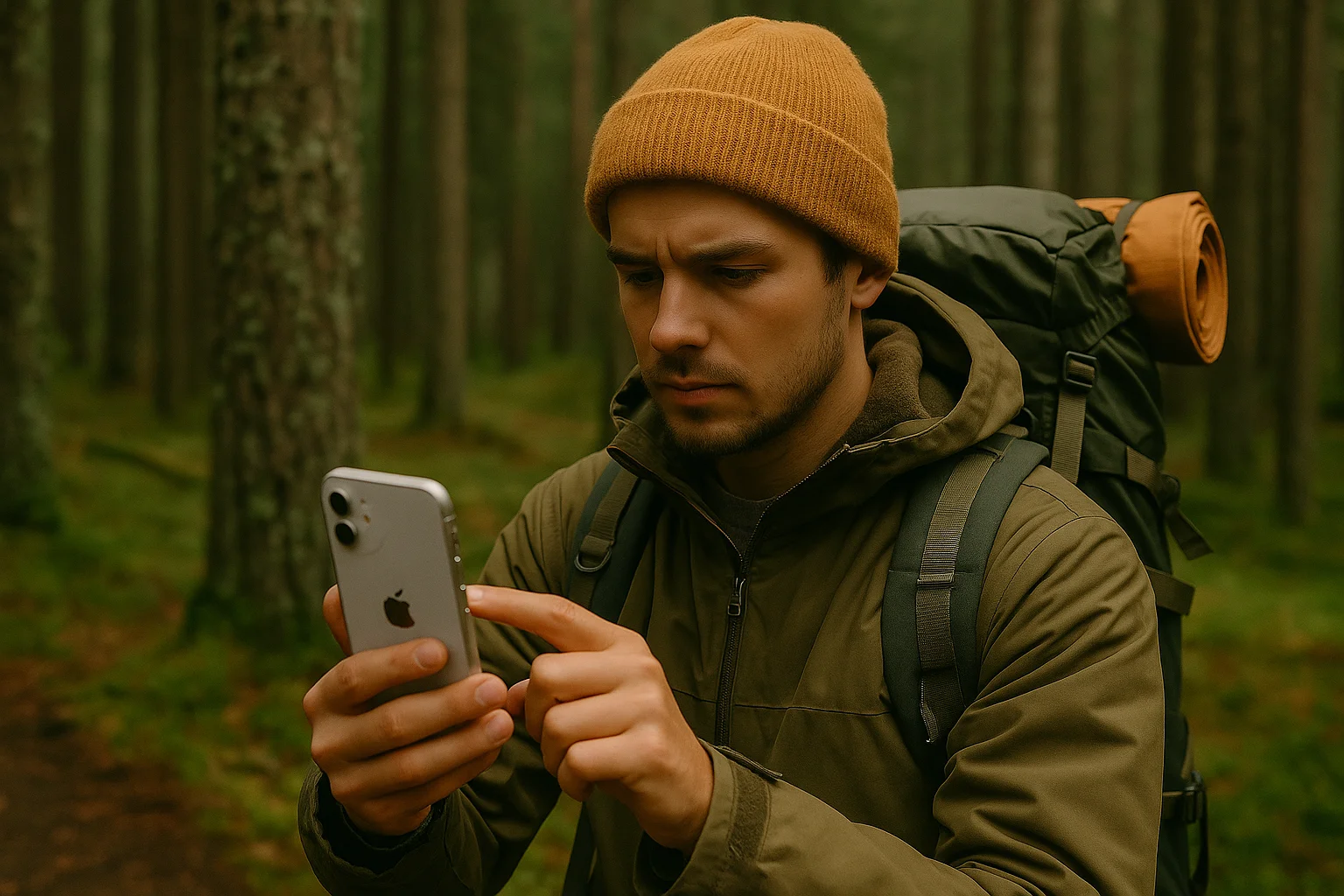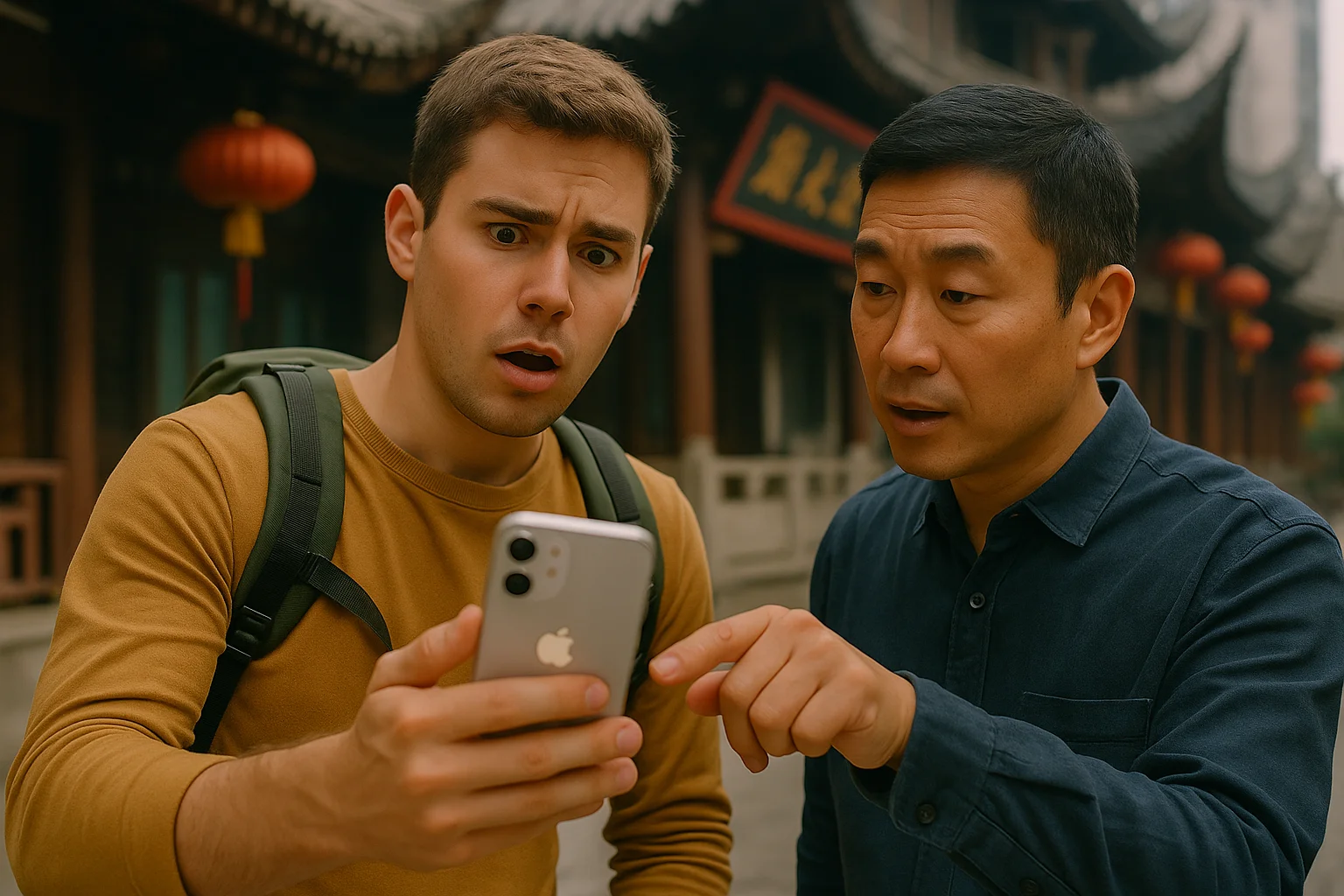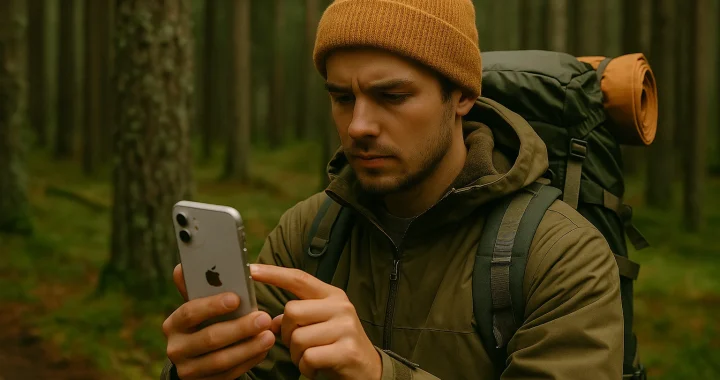Just imagine the situation: you are deep in the mountains. No bars, no Wi-Fi, no help in sight. Your phone screen stares back at you with those dreaded words: “No Service”. The road twists behind you, and you are not sure which way leads home. In moments like these, one question starts circling in your head like a warning siren:
Does GPS work without cell service?
The answer is more reassuring than you might think, but here is the catch — most people don’t really know how GPS works, and even fewer understand how it differs from cellular signals. That confusion leads to myths and these myths can be dangerous — especially when you are relying on technology in unfamiliar places.
So, right now we are going to break down some of the most common misconceptions about GPS and mobile connectivity. And more importantly, here you will find some practical tips to make sure you are prepared — even when your phone loses signal. So, let’s start by clearing up the most common misunderstandings.
Myth 1: “GPS Only Works with an Internet Connection”
Let’s set the record straight: GPS does not need an internet connection to locate you. It uses satellites — more than 20 of them constantly circling the Earth — to determine your location based on signals and timing. What does need the internet, however, are the maps and route data that overlay your GPS location with visual context.
In other words, your phone knows where you are, but without the internet it may not know what is around you — unless you’ve planned ahead. So, here you should receive the main rule: download all the maps before going off the grid.
Offline mapping apps let you preload areas onto your phone so they’re available with or without signal. Try:
- Google Maps (tap “Offline maps” in the menu)
- Maps.me (ideal for hiking trails)
- Organic Maps (great for privacy-conscious travelers)
Fun fact: GPS was developed by the U.S. military in the 1970s. It was designed to work globally, in any condition — long before smartphones and mobile networks even existed.

Myth 2: “GPS Won’t Work without a SIM Card”
This one sounds believable — after all, no SIM card means no mobile network. But that is also exactly the point: GPS doesn’t depend on your carrier at all. The chip inside your phone communicates directly with satellites overhead, not with nearby cell towers.
So whether your SIM is removed, deactivated, or you are simply out of range, your GPS signal can still function perfectly well — as long as the device is powered and has a clear view of the sky.
Bonus use: Turn your old smartphone into a backup GPS device. You don’t need an active SIM or data plan to turn an old phone into a travel navigator. Just:
- Connect to Wi-Fi
- Install an offline maps app
- Download your region
- Enable GPS in settings
Now you’ve got a lightweight, dedicated GPS you can toss into a backpack, glove compartment, or emergency kit.
Myth 3: “If There’s No Signal, You Can’t Be Tracked”
This myth comes from a common misunderstanding — that your phone’s location relies entirely on a cellular connection. While it is true that live tracking often depends on some form of data, modern GPS apps can still record your movements without signal and update them later.
Here is how it works: your GPS module continues logging your location, even when your phone has zero bars. Once your device reconnects to Wi-Fi or a mobile network, that stored data is uploaded, allowing apps to “fill in the blanks” of your journey.
And here you can enter Number Tracker — a smarter kind of location sharing. It doesn’t rely on just one source. Instead, the app uses a combination of technologies, e.g., GPS, Wi-Fi networks, mobile towers, and device sensors to determine and log your location.
Key features of the app include:
- Private circles: Set up secure family or friend groups for real-time and historical location sharing
- Shared routes: Let loved ones follow your trip progress or commute
- Location history: View where someone has been, even during periods without signal
- Special notifications: Get notified when someone enters or exits a defined zone
Pro tip: Use geofencing places around key spots like home, school, or the trailhead. If a family member or you unexpectedly leaves or enters a zone, all in the circle can get an alert — even if the signal is spotty. The app and its features are perfect for parents, hikers, and group travel.
Myth 4: “GPS Is Always Accurate and Immediate”
Not quite. While GPS technology is incredibly precise under the right conditions, many factors can delay or degrade accuracy. Ever opened your map and watched the blue dot drift around like it’s lost? That is not bad coding — it is just physics.
When your phone first starts GPS (called a cold start), it may take up to 1–2 minutes to lock onto enough satellites. This time can be even longer if:
- You’re indoors or under heavy tree cover
- You’re surrounded by tall buildings
- You’re in a remote canyon or valley
To speed things up, modern phones use A-GPS (Assisted GPS) — which taps into cellular networks or Wi-Fi to find satellites faster. But again, this only works if those signals are available.
Quick tips for faster GPS lock:
| Do This… | Why It Helps |
| Turn on GPS before starting trip | Gives phone time to sync with satellites |
| Step into open sky | Improves satellite visibility |
| Keep Wi-Fi enabled (even if not connected) | Helps A-GPS triangulate faster |
If you’re heading somewhere remote, give your GPS a head start. It can make the difference between instant location… and five minutes of frustration.
Myth 5: “Gps Works the Same Everywhere”
Technically, yes — GPS is a global system. But in practice, location accuracy and app behavior can vary significantly depending on where you are.
Some countries impose restrictions on map data or satellite use. In others, dense urban architecture or vast rural landscapes can interfere with performance.
Examples of GPS challenges:
- China: Uses a slightly altered coordinate system (GCJ-02), which can shift locations on non-local apps
- Urban “canyons”: Skyscrapers reflect satellite signals, confusing your device
- Deserts and forests: Lack of reference points can make positioning drift
- Government-controlled zones: In rare cases, GPS data may be deliberately distorted
To avoid getting lost in translation — or terrain — consider using locally-supported apps. Many are optimized for your destination’s data systems and offer preloaded offline maps. For example, apps worth trying abroad include: Gaode (Amap) or Baidu Maps in China; Guru Maps for remote hiking; Locus Map for detailed outdoor navigation.
Tip: Practice makes perfect, so remember one more time — download local maps before your trip, and test them in airplane mode to make sure they work as expected.

Myth 6: “GPS Stops Working without a Signal”
This myth confuses GPS signals with mobile signals — and they are completely different things. Even if you are in the middle of nowhere with no bars and no Wi-Fi, your GPS can still function normally.
Many modern apps are designed to log your location in the background, even when you are offline. This means they store your travel history locally and update it to the cloud once your phone reconnects. It’s like your phone is silently taking notes — and hands them in later.
Apps that track offline and sync later:
- ViewRanger – perfect for hiking; syncs later
- Komoot – great for cycling and trekking routes
- Geo Tracker – minimalistic and offline-friendly
- Number Tracker – as mentioned earlier, stores and shares last known locations once signal returns
Hack: Before heading into a signal-free zone, open your GPS app while still online. This gives it a “warm start,” locking onto satellites faster and reducing cold-start delays later.
Signal Lost? You’re Still on Track
Turns out, most fears about GPS are just noise. No signal doesn’t mean no location — and no internet doesn’t mean you are stuck. With offline maps, smart apps, and a little prep, your phone can guide you almost anywhere, anytime. GPS is more independent than you think — and now, so are you.

